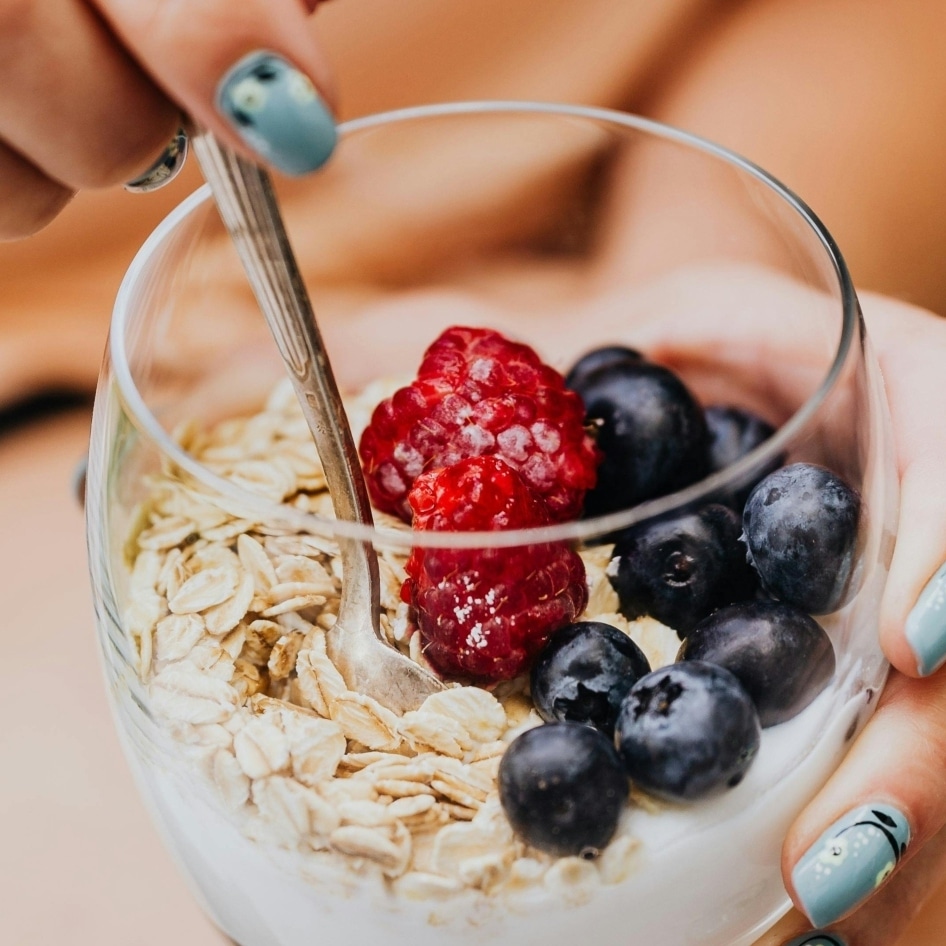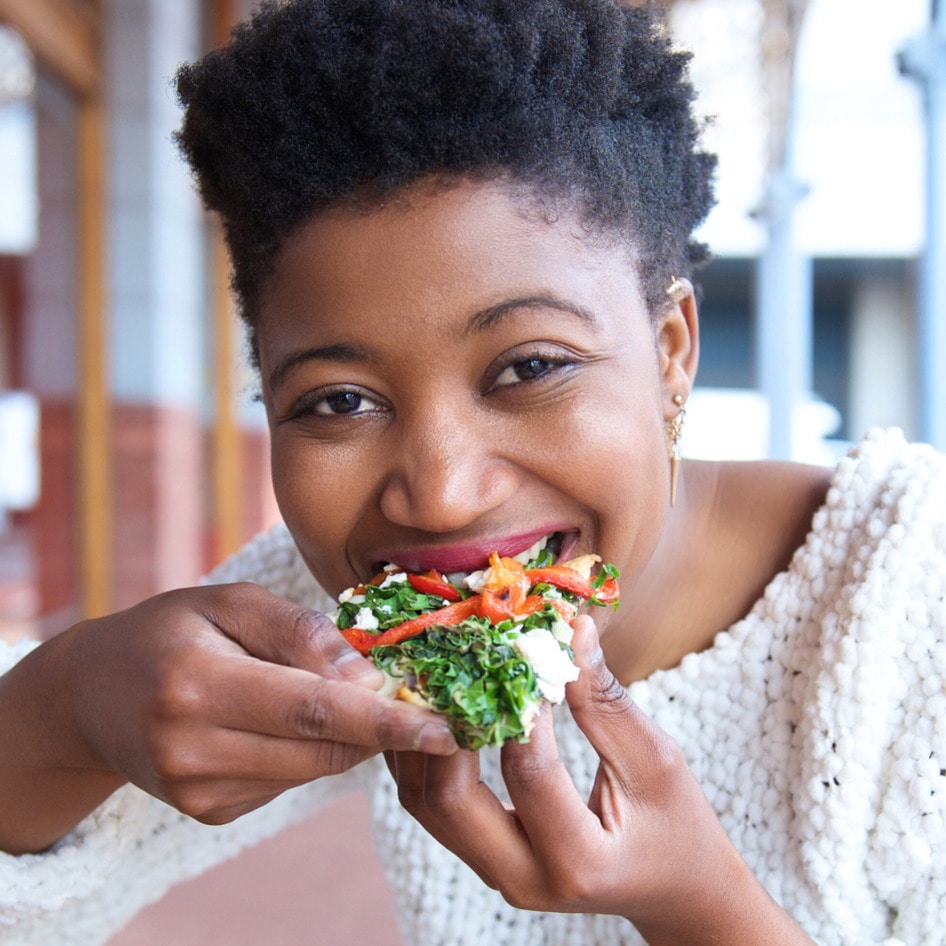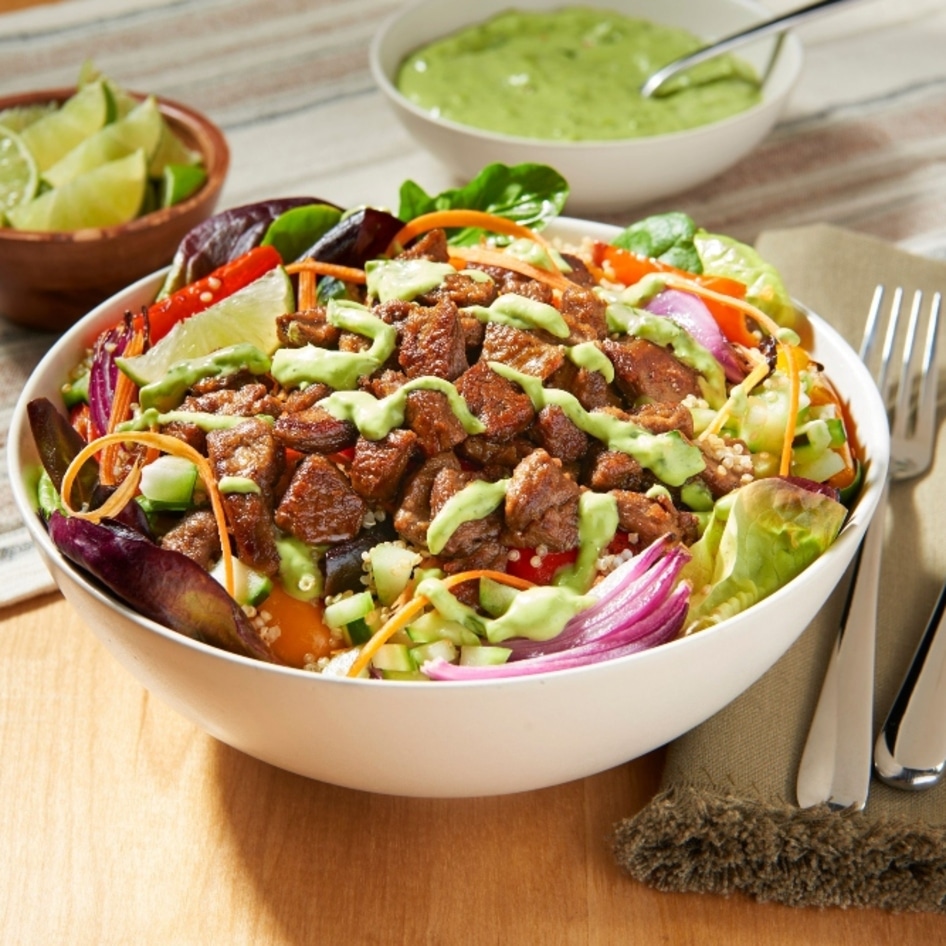5 Hormone-Friendly Vegan Food Swaps for Easier Periods
If your period is a pain, here are five plant-based ways to ”level up” your food choices to keep your ovaries happy and your hormones in balance.
June 20, 2018
When it comes to hormones, not all foods are created equal. Some seemingly benign foods are, in fact, the culprits behind cramps, bloating, and irritability, while others help keep your mood balanced, energy levels high, and hormones in harmony. Inspired by the best-selling book, Woman Code by Alissa Vitti, here are some tried-and-true hacks that will have you strutting through your cycle effortlessly and vibrantly without missing a beat.
Sweeteners
Sugar cravings are real, but they come at a cost. Whether hiding in your favorite non-dairy creamer or a tempting double fudge brownie, sugar (whether it’s white or brown) raises your blood-sugar rapidly, which triggers your stress response and makes your liver overproduce insulin to temper the glucose roller coaster. Why? Because having sugar separated from its source is a modern convention. In nature, sweet flavors are primarily found in their whole-food state, such as fruit, berries, root vegetables, and sugar cane. Once you separate and condense the sugary essence of any food, it puts a strain on the liver and diverts its attention from eliminating toxins such as environmental pollutants, fat-soluble waste, and spent hormones from the body. To sweeten your desserts and smoothies, consider throwing in fiber-filled, vitamin-rich dates instead. Not only do they add great flavor, they are a whole-food sweetener that the body can recognize and handle more effectively and with less blood-sugar disruption. Similarly, stevia, coconut nectar, and date sugar are less likely to spike blood glucose levels.
Fats
If you cook with only one oil, make it coconut, because no other helps to balance your hormones, stabilize your blood sugar, support your thyroid, and heal your gut better. Commonly used oils such as safflower, vegetable, or canola oil contain more omega-6 fatty acids than omega-3, which causes your body to produce cramp-causing prostaglandins in the uterus. However, omega-3-rich oils such as coconut, avocado, and olive have the opposite effect and promote muscle-relaxing prostaglandins instead. Be mindful of which oils are in your condiments, buttery spreads, and snacks. Keep your uterus at ease during your menstrual cycle by keeping stress levels low and snacking on seeds such as pumpkin, sunflower, and sesame. If you’re in the thick of cramping and looking for relief, grab vitamin E- and magnesium-rich foods like almonds, hazelnuts, and leafy greens.
Hot Beverages
I know this is heartbreak for hardcore coffee lovers, but hear me out. Caffeine does more than perk you up when you’re feeling tired and low. As a diuretic, coffee flushes out helpful nutrients and minerals such as magnesium and B vitamins which are important precursors to hormone production. As a stimulant, caffeine raises cortisol levels, which tells your endocrine system to shift energy and attention towards surviving as opposed to thriving. The biochemical message of stress implies a threat or danger, which shifts the body to fight-or-flight mode and away from safeguarding reproductive functions. Even if fertility isn’t your goal, having regular, symptom-free periods help preserve libido and longevity, while lowering your risk for premature aging and inflammatory diseases later in life. If totally giving up coffee is not an option, limit your intake to one cup per day, make it bulletproof by adding coconut oil, and never drink it on an empty stomach. For other hot beverages to get your day going, try a turmeric latte, rooibos chai, or kukicha “twig” tea.
Soy Alternatives
Soy makes vegan eating a breeze. With their high protein and low carb content, soy products are easy to build a balanced meal around. However, the phytoestrogens of soy can be a challenge to pre-existing reproductive disorders which are mostly rooted in estrogen dominance. Fibroids, endometriosis, polycystic ovaries, etc. commonly indicate an excess of estrogen in the body. Adding processed soy products to your diet is a surefire way to tip the scales toward hormonal overload, especially during times of the month when estrogen levels are naturally higher. Even if you don’t show tell-tale signs of hormonal imbalance, play it safe by sticking to limited amounts of fermented and organic soy products like natto, miso, and tempeh—all of which have less hormone-disrupting qualities. Alternatively, check out hemp tofu and chickpea tempeh when you need a protein-dense entrée or rely on beans, legumes, nuts and seeds.
Protein-Rich Breakfasts
Smoothie bowls topped with fresh fruit and chia seeds are gorgeous, but more suitable as a pre-breakfast as opposed to breakfast itself. While sleeping, your body is nutritionally in a state of fasting and recovery. To jumpstart the day with stable blood sugars and sustainable energy, pay special attention to breakfast meals that are rich in protein and fat, but limited in carbs. Starting your day with spiked blood sugar—whether from a huge bowl of oatmeal, tall stack of pancakes, or a ton of fruits—leaves you prone to blood-sugar crashes, fatigue, and simple carb cravings. Stave off these pitfalls with a well-rounded breakfast, followed by reasonably spaced meals and snacks throughout your day. Remember, your liver has more important work to do than trying to keep erratic blood sugar levels in check all day. Suitable morning meal suggestions include chickpea omelets, amaranth porridge, or nut-based granola with coconut yogurt. When you’re pressed for time, grab a smoothie supplemented with a soy-free protein powder or snack bar to go with it.
Chantal Blake is a freelance writer and unschooling mom of two from New York City. She has been traveling and living abroad with her vegan family for nearly a decade.
JUMP TO ... Latest News | Recipes | Guides | Health | Subscribe







